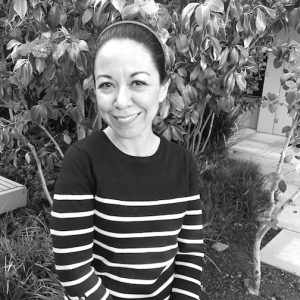ADA 2019 in Review
The biggest diabetes conference of the year—American Diabetes Association’s 79th Annual Scientific Sessions is over, and Beyond Type 1’s editorial staff was reporting live from the conference. Here are the highlights, lowlights, insights and biggest takeaways from ADA 2019.
 |
 |
 |
| Todd Boudreaux | Mariana Gómez | T’ara Smith |
| Editorial Manager Beyond Type 1 |
Project Manager Beyond Type 1 en Español |
Project Manager Beyond Type 2 |
What was the highlight of ADA 2019 for you?
Todd Boudreaux: It’s hard to pick just one, but I’m going to say one of the unexpected highlights for me was the Press Room! I met people from all over the world writing about diabetes, each with unique insights into the disease and different angles they were interested in covering. The ADA staff was super helpful, and the free coffee wasn’t bad either.
Mariana Gómez: D-Data of course! This is a separate event from ADA, where the FDA, people with diabetes, pharma groups and others interested in diabetes get to share some insight and plan working together. Another favorite moment was the panel discussion—’Dilemmas with Medical Devices- right device, right person, right place.’ Even though we had just learned about positive impacts in continuous glucose monitor (CGM) and technology for diabetes management, it is still a fact that not all of our patients use or know about their existence. This debate presented barriers and advice to overcome them (for health professionals). This group seemed especially aware of “one size does not fit all” and promotes satisfying individual needs.
T’ara Smith: There were several highlights this weekend. I really enjoyed D-Data and being a judge for the DIY patient-tech demo. I learned new things about diabetes technology and it was cool to see discussions about topics such as time-in-range and A1c led by leaders in the industry. It was also nice to meet all of the amazing people who do incredible work within the diabetes [online] community, such as Chris Memering, Hope Warshaw and Donna Ryan from AADE, Renza from Diabetes Australia, Manny from Livongo and so many others.
Most inspiring person you saw at the conference
TB: Every time I hear Dr. Anne Peters talk, I’m blown away. I got to see her participate on a panel at the TCOYD + Diatribe Forum on Monday night. I have interviewed Dr. Peters in the past about insulin access in America and she has such an amazing outlook and insight into the issues that people with type 1 face on a daily basis.
MG: The whole Beyond Type 1 team. This small group of people dedicated themselves all ADA to cover, create notes, do interviews and run from one session to another.
TS: This is so hard because there were so many inspiring people! But I’m going to choose two—JDRF CEO Aaron Kowalski and ADA CEO Tracey Brown. I was at D-Data where Dr. Kowalski was on a panel called “Beyond A1c” and he said something to the effect of: “I want to remove diabetes as far from our lives as humanly possible; I don’t want to think about diabetes all the time.” Then he mentioned that the psychosocial aspects of diabetes are under-appreciated. Tracey Brown spoke after the screening of “A Touch of Sugar” and how we can truly stop diabetes by addressing the most important issues that exacerbate it such as the lack of food access. The way both of these leaders spoke about the issues that I’m personally passionate about inspired me to keep striving for progress, no matter how hard it is.
Most interesting session you attended
TB: I was really surprised by the session—’SGLT-Inhibitor Adjunctive Therapy in Type 1 Diabetes Mellitus—Is It Worth It?’ which saw Bruce Perkins MD, MPH debating David Nathan, MD on the relative risks and benefits of SGLT use in type 1s. The audience started out heavily in favor of SGLT-use for T1D, but by the end were less sure.
MG: ‘Glycemic Goals and Overtreatment—What’s Driving the Debate?’ There are some interesting differences between ADA, ACP and other organizations in terms of HbA1c results. We now know that this cannot be the only variable we analyze but also time in range.
TS: My favorite session was on diabetes complications. In the session, we learned about the resurgence of diabetes complications over the last decade. The speaker highlighted some of the causes as generational—that younger people are the most obese generation, yet. Other causes were access to healthcare and socioeconomics. The second speaker in that session went over the challenges of diabetes care for the elderly and how some things like where a person lives (i.e. nursing home, independently, or assisted living) relate to the training of staff. These make such a huge difference in how much an older individual can follow a diabetes management plan. To me, these show how much work there needs to be done in understanding and solving the health challenges that impact life with diabetes.
Most impressive study results
TB: The results of the Tandem Control-IQ International Diabetes Closed Loop (iDCL) trial study were incredible. Over 70% time in range with that number reaching 76% overnight is really amazing. As someone living with T1D, I can’t believe how close we are to having a multitude of viable closed loop options.
MG: Teplizumab, by far. A treatment of immunotherapy, which acts directly on the immune system, reduced the progression to type 1 diabetes in high-risk individuals. As far as I know this is the first study to show that type 1 diabetes can be delayed two or more years among people who are at high risk (our kiddos).
TS: I thought the most impressive and surprising study results were from the RISE trial, which showed how aggressive type 2 diabetes is in people younger than the age of 20 compared to adults. Though I didn’t expect type 2 diabetes (T2D) progress exactly the same in youth/children and adults, I didn’t expect to hear it’s more aggressive in younger populations, even with treatment. What other steps can we take to prevent type 2 in kids? How do we get the community + everyday people involved?
Biggest surprise
TB: I was blown away by both how big and how small the diabetes community is. The number of attendees was staggering (over 15,000) and yet everyone seemed to know everyone else. I can’t count how many times I saw people run into old friends or former colleagues, and how well-known most of the speakers were among the audience.
MG: Medtronic’s innovation suite where they showed their new prototypes: new sensors, new pumps, new features—this was a small room with their most impressive engineers and diabetes specialists explaining attendees their future projects. Most of them have not been disclosed yet. I was absolutely impressed to see how close they are to developing a pump that will basically work on its own. A new algorithm will require less user intervention.
TS: Probably the San Francisco weather—it was warmer than usual, from what I heard. But, in all seriousness, the biggest surprise was the number of tech people with diabetes creating ways to make life easier for everyone.
Something you wish was different
TB: There was simply TOO MUCH to see and do and not nearly enough time to take it all in. Two of the biggest sessions of the weekend, a symposium on ‘Making Insulin Affordable’ and the results of the Teplizumab trial were going on at the same time and I wish I could have attended both (thank goodness for BT1’s live-tweeting of insulin affordability)! There were also so many amazing posters that I didn’t have the time to appreciate—I could have spent an entire weekend in the poster hall alone.
MG: I would have liked to see more people from Latin American countries and more tweets and information in Español. Having debates where people with diabetes could have participated would be interesting too, because talking about people with diabetes (PWD) with them in the same room can provide benefits and different insights.
TS: I would like to see more psychosocial-related topics. Also, I think including some more people who represent the populations who struggle with diabetes the most, including community health educators, to lead on some of these panels and sessions.
Overall impressions
TB: What a crazy weekend. It was a lot of walking, very little sleep, more information than I could process and really incredible to see how much passion there is in the diabetes community. There were so many great presentations and slideshows, it’s easy to miss something. I felt lucky to have Mariana there who had been to several ADAs before to advise on the structure and madness. Lots of coffee and comfortable shoes!
MG: This seems to be the biggest diabetes conference. The field of diabetes care is changing rapidly as new research, technologies and treatments that can improve the health and well-being of people with diabetes continue to emerge. This is the place where you get to know it all.
TS: I loved it! I hope everyone impacted by diabetes has a real opportunity to go in future years. I’m excited about my next ADA conference.
This article is part of Beyond Type 1’s ADA 2019 coverage. For full ADA 2019 coverage, click here.





